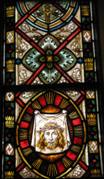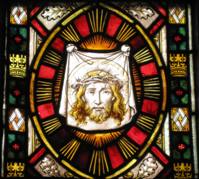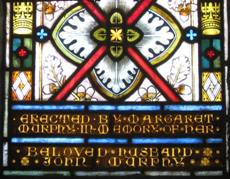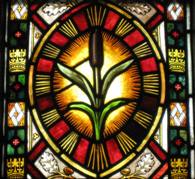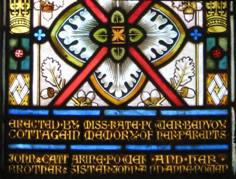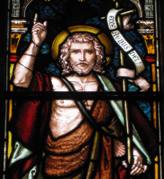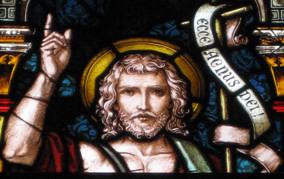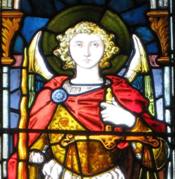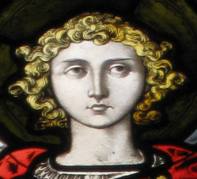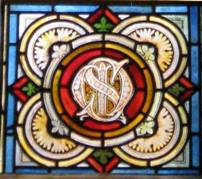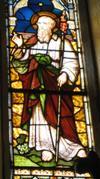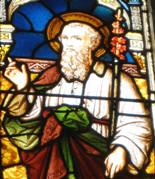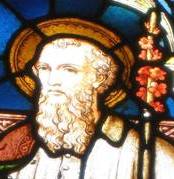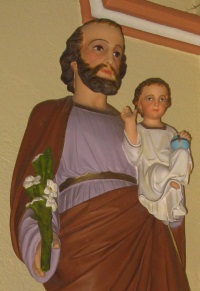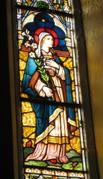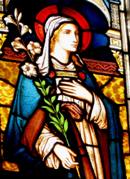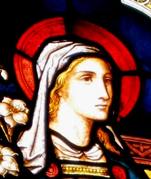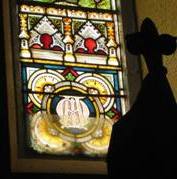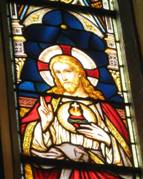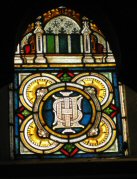The South Transept Windows
In the south transept there are three windows. The two in the gable are of St. Michael the Archangel and St. John the Baptist. The third window, in the east wall of the transept, is a plain lattice window. There is no window in the west wall of the transept as that wall is also the wall of the sacristy.
The St. Michael and John Baptist windows were repaired and restored in 2011 and Colette Langan of Irish Stained Glass sent us some photos of the windows before, during, and after restoration. You can see her photos HERE.
Now take a look at the image below which comes from Morton Baptist Chapel in Lincolnshire, England. It shows Salome with the head of John the Baptist. King Herod looks quite pleased although the gospels have it otherwise –
“But an opportunity came when Herod, on his birthday, gave a banquet for his nobles and military commanders and the leading men of Galilee. For when Herodias’s daughter came in and danced, she pleased Herod and his guests. And the king said to the girl, ‘Ask me for whatever you wish, and I will give it to you.’ And he vowed to her, ‘Whatever you ask me, I will give you, up to half of my kingdom.’ And she went out and said to her mother, ‘For what should I ask?’ And she said, ‘The head of John the Baptist.’ And she came in immediately with haste to the king and asked, saying, ‘I want you to give me at once the head of John the Baptist on a platter.’ And the king was exceedingly sorry, but because of his oaths and his guests he did not want to break his word to her. And immediately the king sent an executioner with orders to bring John’s head. He went and beheaded him in the prison and brought his head on a platter and gave it to the girl, and the girl gave it to her mother. When his disciples heard of it, they came and took his body and laid it in a tomb.” [Mark 6:21-29].
Our own window of John the Baptist is not at all gruesome!

